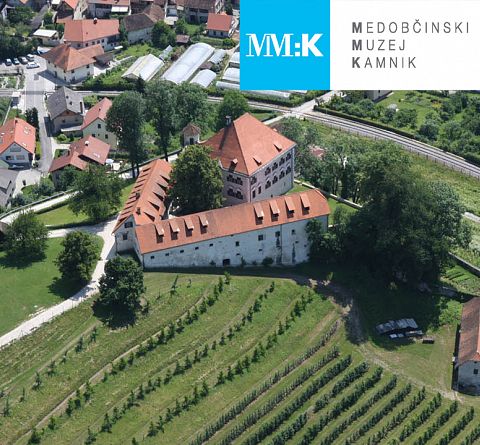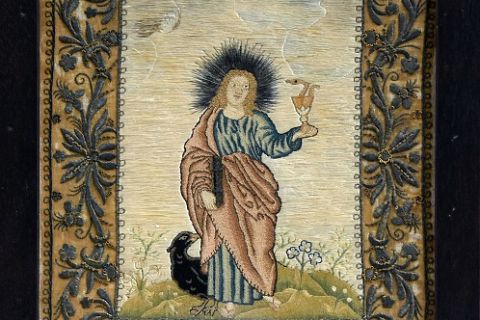Devotional painting of St. John the Evangelist, 18th century
The embroidery depicts St. John the Evangelist with a chalice with a snake and an eagle on a lawn with flowers. Legend has it that once a pagan priest offered him a goblet of poisoned drink and said to him: “If you drink this and don’t die, I too will accept faith in your God.” The apostle took the goblet, blessed it with the sign of the cross, and then he the was devoured by a snake. We often see this scene in his depictions.
The embroidery is made in a knotted stitch with silk threads of delicate colors. The frame is stylized flowers with gold threads. The work of the Convent of the Poor Clares in Mekinje near Kamnik. The museum bought the embroidery from Sadnikar’s collection.
There were once seven Poor Clare monasteries on Slovenian territory. Prayer echoed in them for different periods of time: in Mekinje near Kamnik (1300 – 1782), in Koper (1299/1301 – 1806), in Celje (1300 – 1335), in Šentvid above Glina in today’s Austrian Carinthia (1321/23 – 1553 /54), in Škofja Loka (1358 – 1782), in Gorica (1653 – 1782) and in Ljubljana (1657 – 1782). Austrian Emperor Joseph II. at the beginning of 1782, by decree, he dissolved all monasteries that were “of no use to the welfare of the state”. Poor Clares from Mekinje and probably from elsewhere went to the Dominican monastery in Velesovo near Kranj.
The Poor Clares made a great contribution to culture and sacred art (especially the monasteries in Mekinje and Škofja Loka), and in the 17th and 18th centuries also to educational activities. In addition to prayer, the Poor Clares also devoted themselves to the study of spirituality, cultivated church and choral singing, and performed household and various manual (sewing, needlework, embroidery) and other work.




